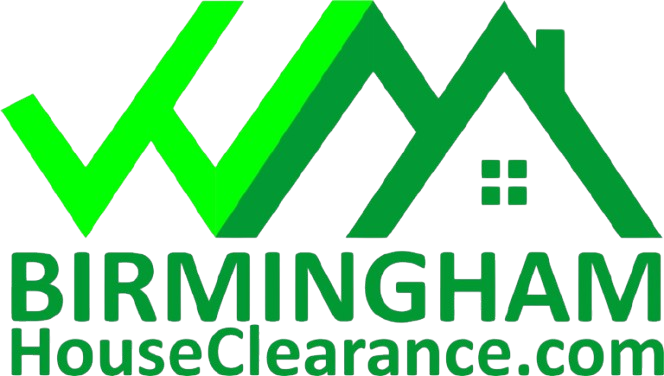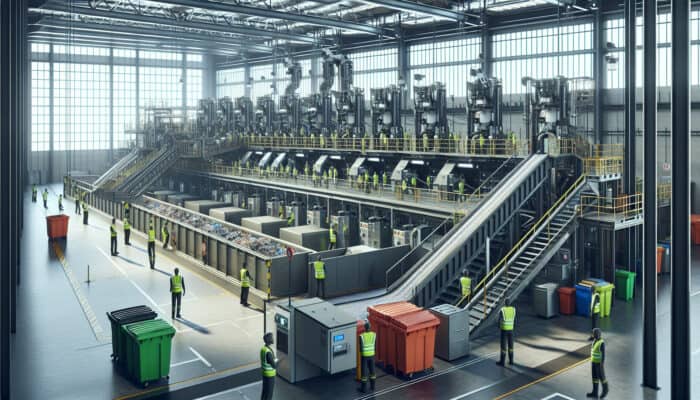Comprehensively Navigating UK Clearance Regulations
In-Depth Analysis of UK Legislation

Managing Complex Clearance Jobs Efficiently: Understanding the intricacies of UK clearance regulations is vital for efficiently managing complex clearance jobs. The UK boasts a comprehensive legislative framework that governs various clearance processes, primarily designed to safeguard safety, protect the environment, and ensure compliance with national standards. A key piece of legislation is the Environmental Protection Act 1990, which establishes a thorough framework for waste management and disposal, influencing the approach to clearance jobs nationwide. Additionally, the Health and Safety at Work Act 1974 imposes a responsibility on employers to guarantee the safety of their workforce, which is particularly relevant in clearance operations where numerous hazards exist.
Another critical regulation is the Control of Pollution Act 1974, which outlines the requirements for managing noise and air pollution during clearance activities. Gaining a thorough understanding of these regulations is not merely advantageous; it is essential for ensuring compliance and avoiding potential legal ramifications. Companies engaged in clearance work must remain vigilant and up-to-date regarding legislative changes, adapting their practices to comply with any new regulations that may be introduced.
Moreover, local authorities may enforce additional regulations specific to their regions, particularly concerning planning permissions and site assessments. Early engagement with local councils can clarify requirements and streamline workflows, optimising the management of clearance jobs.
Essential Regulatory Bodies Overseeing Clearance Operations
Numerous regulatory bodies are responsible for overseeing the enforcement and implementation of clearance regulations in the UK. The Environment Agency (EA) plays a crucial role, regulating waste management and ensuring adherence to environmental legislation. They provide guidance on best practices for waste disposal, especially in complex clearance jobs that may involve various materials. The EA also issues permits, monitors compliance, and takes enforcement action against non-compliance.
Another significant authority is the Health and Safety Executive (HSE), which is dedicated to workplace safety. Their guidelines are essential in ensuring that workers engaged in clearance jobs are adequately protected from risks associated with hazardous materials and unsafe practices. The HSE’s regulations inform many training programmes and safety protocols implemented on clearance sites.
Local councils and planning authorities also play a vital role in clearance operations, particularly in terms of land use and environmental assessments. Engaging with these bodies not only ensures regulatory compliance but also enhances communication with the community, which may be affected by clearance activities. Companies must understand the interconnected network of these regulatory bodies to execute their tasks effectively.
Understanding Compliance Requirements for Clearance Projects
Compliance is of utmost importance in efficiently managing complex clearance jobs. Understanding the specific requirements for different types of clearance jobs is crucial for avoiding fines and ensuring operational continuity. Each job may necessitate a tailored approach, depending on the materials involved, the location, and the scope of work.
For instance, clearance jobs involving construction waste may require adherence to specific guidelines on waste segregation and disposal. Correctly classifying waste is vital, as different types of waste—such as hazardous and non-hazardous—have distinct treatment and disposal protocols under UK law. Effective waste management is not only a legal requirement but also a crucial aspect of environmental stewardship.
Additionally, companies must ensure that all personnel involved in clearance operations are adequately trained and certified when necessary. This includes training on the safe handling of materials, emergency protocols, and the operation of equipment. Implementing a robust compliance programme that encompasses all aspects of legal requirements helps mitigate risks associated with non-compliance.
Furthermore, maintaining accurate records and documentation of compliance-related activities is crucial. This documentation can be vital during audits and inspections, demonstrating a company’s commitment to adherence and responsible management practices.
Navigating the Application Process for Clearance in the UK

The application process for obtaining clearance in the UK can be intricate, necessitating a careful approach to ensure that all required documentation is accurately prepared and submitted. The first step is to identify the type of clearance required; this can range from planning permissions to environmental permits, depending on the nature of the project.
Once the type of clearance has been determined, applicants must gather relevant documentation. This often includes site assessments, risk assessments, and detailed project proposals that outline the intended scope of work. In complex clearance jobs, this stage is particularly critical as it sets the foundation for regulatory approval and operational planning.
Applying typically involves engaging with various stakeholders, including local authorities and regulatory bodies. This engagement is not merely a formality; it provides an opportunity to address any potential concerns early in the process, facilitating a smoother approval process. Depending on the project’s complexity, the approval timeline may vary, making patience and diligence essential.
After submission, applicants may need to respond to queries or provide additional information, demonstrating their commitment to compliance and transparency. Successfully navigating this process is crucial for efficiently managing complex clearance jobs, ensuring that all legal and regulatory requirements are met before work commences.
Addressing Common Challenges and Implementing Solutions
While managing clearance jobs in the UK presents numerous opportunities, it also introduces distinct challenges that require strategic solutions. One of the most significant challenges is navigating the intricate regulatory landscape, which is often subject to change. To tackle this, companies should invest in legal counsel or compliance experts who are well-versed in the current clearance regulations. This investment not only ensures compliance but also saves time and resources in the long run.
Another prevalent challenge is resource allocation, particularly in projects that necessitate specialised equipment and trained personnel. Effective project management software can help streamline this process, allowing for real-time tracking of resource allocation and identifying any shortages early on. By leveraging technology, companies can optimise their workflows and enhance the efficiency of their clearance operations.
Additionally, health and safety concerns are paramount during clearance jobs, especially when hazardous materials are involved. Regular training sessions and drills can mitigate risks associated with workplace accidents. Creating a culture of safety, where employees feel empowered to report unsafe conditions or practices, is essential for maintaining a safe work environment.
Lastly, managing community relations can also pose challenges during clearance projects. Engaging with residents and stakeholders through transparent communication and community meetings can alleviate concerns. By proactively addressing issues, companies can foster positive relationships and ensure smoother project execution.
Effective Planning and Preparation for UK Clearance Projects
Implementing Comprehensive Site Assessment Techniques

Conducting a thorough site assessment is critical for efficiently managing complex clearance jobs. This initial phase allows project managers to identify potential hazards, understand site-specific challenges, and plan accordingly. In the UK, site assessments typically involve a combination of desk-based research and on-site evaluations.
Desktop research involves reviewing historical data about the site, including previous land use, local environmental conditions, and relevant planning applications. This information helps identify potential risks, such as contamination or structural issues, that may impact the clearance process. Furthermore, engaging with local authorities can provide insights into any specific regulations or community concerns that may influence the project’s approach.
An on-site evaluation involves a detailed walk-through of the location, enabling direct observation of the conditions. This phase should encompass soil testing for contamination, assessing access points for equipment, and evaluating the surrounding environment for potential ecological impacts. A comprehensive site assessment not only informs the planning process but is also pivotal for compliance with UK regulations.
Integrating technology can streamline site assessment processes. For example, using Geographic Information Systems (GIS) can provide valuable data visualisation, helping to highlight potential issues that may not be immediately apparent. Drones can also offer aerial views of the site, assisting in mapping and identifying challenging terrain.
Ultimately, effective site assessment techniques are foundational for anticipating challenges and ensuring that clearance jobs are executed efficiently, safely, and in compliance with regulatory requirements.
Strategising Resource Allocation for Clearance Projects
Efficient resource allocation is a cornerstone of successful clearance operations. In the UK, where projects can vary greatly in scale and complexity, having robust strategies in place is essential for efficiently managing complex clearance jobs. One effective approach is to implement a resource management system that tracks personnel, equipment, and materials in real-time.
Utilising project management software allows teams to gain visibility into resource availability, enabling managers to allocate assets where they are most needed. This not only optimises workflows but also prevents delays caused by resource shortages. Furthermore, forecasting future resource needs based on project timelines can help in securing necessary equipment and personnel well in advance.
Training and development should also be factored into resource allocation. Ensuring that personnel are adequately trained for specific tasks enhances productivity and safety on-site. Investing in ongoing training programmes can also prepare teams for unexpected challenges, equipping them with the skills needed to adapt as projects evolve.
Collaboration is another critical element of effective resource allocation. By fostering open communication among teams, project managers can facilitate the sharing of resources and knowledge, optimising the overall efficiency of clearance operations. This collaborative approach not only enhances project outcomes but also promotes a culture of teamwork and accountability among staff.
Ultimately, implementing strategic resource allocation practices ensures that clearance jobs are executed smoothly and within budget, further enhancing operational efficiency.
Establishing Safety Protocols and Training for Clearance Operations
Safety is paramount in any clearance operation, particularly in the UK, where regulations surrounding health and safety are stringent. For efficiently managing complex clearance jobs, establishing robust safety protocols and comprehensive training programmes is essential. The first step is to conduct a thorough risk assessment that identifies potential hazards associated with the specific clearance job.
Based on the findings of the risk assessment, companies should develop detailed safety protocols tailored to the project. These protocols must cover everything from equipment operation to personal protective equipment (PPE) requirements, ensuring that all employees are aware of the risks they may encounter and how to mitigate them. Regular safety audits can help ensure ongoing compliance and identify any areas for improvement.
Training is essential for ensuring that all team members are well-informed about safety protocols and procedures. This includes not only initial training for new employees but also ongoing training sessions for existing staff. Incorporating practical exercises, such as emergency response drills, can enhance understanding and retention of safety procedures.
Furthermore, fostering a culture of safety within the organisation is vital. Encouraging employees to report unsafe conditions without fear of reprisal creates an environment where safety is prioritised. Management should lead by example, demonstrating a commitment to safety protocols and engaging in regular conversations with staff about safety concerns and improvements.
By prioritising safety protocols and effective training, companies can significantly reduce the risk of accidents, ensuring a safer working environment and enhancing the efficiency of clearance operations.
Enhancing Communication in UK Clearance Projects
Effective Stakeholder Engagement Strategies
Engaging stakeholders effectively is crucial for the success of clearance projects in the UK. The diverse range of stakeholders, including local communities, regulatory bodies, and clients, requires a strategic approach to communication. For efficiently managing complex clearance jobs, it is essential to understand the unique perspectives and concerns of each stakeholder group.
Open lines of communication should be established as early as possible in the project timeline. This can involve holding preliminary meetings with stakeholders to discuss project objectives, timelines, and expected impacts. Providing clear and accessible information helps foster transparency and build trust, reducing resistance and potential conflicts during the clearance process.
Additionally, regular updates throughout the project’s lifecycle are vital. Whether through newsletters, community meetings, or social media, keeping stakeholders informed about project progress and any changes can significantly enhance relationships and foster trust. This proactive approach not only mitigates concerns but also invites feedback, allowing stakeholders to voice their opinions and contribute to decision-making.
Incorporating community feedback into project planning can lead to improved outcomes, as local insights often highlight potential issues that may not have been considered otherwise. Engaging with stakeholders throughout the project ensures that their needs and concerns are addressed, ultimately leading to smoother clearance operations.
Furthermore, establishing a local liaison person can be beneficial. This individual can serve as the primary point of contact for stakeholders, providing a consistent channel of communication and ensuring that any issues are resolved promptly and effectively.
Ultimately, effective stakeholder engagement is key to minimising disruption and enhancing the efficiency of clearance projects.
Fostering Inter-team Coordination for Project Success
Effective inter-team coordination is fundamental for efficiently managing complex clearance jobs. With various teams working on different aspects of a project—from site assessment to waste management—ensuring that everyone is aligned and informed is critical for success. One effective strategy is to implement regular cross-team meetings, where representatives from each team can discuss progress, challenges, and upcoming tasks.
These meetings provide a platform for sharing insights and collaboratively addressing any issues, fostering a sense of unity among teams. Additionally, employing project management tools that allow for real-time updates and information sharing can significantly enhance coordination. This technology facilitates transparency, enabling teams to track each other’s progress and adjust their actions accordingly.
Establishing clear communication protocols is essential to minimise misunderstandings and enhance collaboration. This includes clearly defining roles and responsibilities, ensuring that team members understand their contributions to the project. A well-structured communication plan can help set expectations and streamline interactions across teams.
Encouraging an open culture where team members feel comfortable asking questions or seeking assistance can also promote better coordination. When teams are willing to share knowledge and resources, project execution becomes smoother, and potential delays are mitigated.
Moreover, recognising and celebrating collaborative efforts can foster a positive team culture, reinforcing the importance of working together for the project’s success. Effective inter-team coordination ultimately leads to enhanced efficiency and improved outcomes in clearance operations.
Implementing Rigorous Reporting and Documentation Practices
Accurate reporting and documentation are critical components of efficiently managing complex clearance jobs. In the UK, maintaining comprehensive records not only ensures compliance with regulatory requirements but also supports effective project management. Each stage of the clearance process should be meticulously documented, including site assessments, safety checks, waste management practices, and stakeholder communications.
Creating standardised reporting templates can streamline this process, ensuring consistency and facilitating easy access to information. Regular reporting intervals can help keep all team members informed about progress and any challenges that may arise, allowing for swift adjustments when necessary.
Documenting safety protocols and training sessions is equally important. These records serve as evidence of compliance with health and safety regulations and can be invaluable during audits or inspections. Ensuring that all employees sign off on safety training documentation reinforces accountability and ensures that all employees are aware of their responsibilities.
Moreover, leveraging technology can greatly enhance reporting and documentation efforts. Cloud-based platforms enable real-time updates and the easy sharing of information among team members, regardless of their location. This not only enhances collaboration but also ensures that everyone works with the most accurate and up-to-date information.
Finally, regular audits of documentation practices can help identify areas for improvement. By reviewing and refining their reporting processes, companies can enhance efficiency and ensure compliance with all regulatory requirements.
Effective reporting and documentation ultimately underpin the success of clearance projects, contributing to both compliance and operational efficiency.
Utilising Technology and Tools for UK Clearance Projects
Exploring the Latest Equipment and Software Innovations
In today’s fast-paced environment, leveraging the latest equipment and software is vital for efficiently managing complex clearance jobs. The evolution of technology has introduced advanced tools that streamline operations and enhance safety on clearance sites. For instance, modern excavators and diggers equipped with GPS technology enable precise work, significantly reducing the risk of errors and optimising productivity.
In addition to machinery, software solutions are transforming the clearance process. Project management tools such as Asana and Trello allow teams to organise tasks, monitor progress, and collaborate more effectively. These platforms facilitate real-time communication, ensuring that all team members are aligned on project goals and timelines.
Furthermore, data analytics software can provide valuable insights into project performance, enabling managers to identify bottlenecks and make informed decisions. By analysing data on resource allocation, labour efficiency, and waste management, companies can implement strategies that enhance overall project performance.
Integrated waste management software is another key innovation. These tools help track waste production, identify opportunities for recycling, and ensure compliance with waste disposal regulations. By utilising technology to monitor waste, companies can significantly reduce their environmental impact and improve sustainability.
Investing in the latest equipment and software not only enhances efficiency but also positions companies as leaders in the clearance sector, enabling them to deliver high-quality results that align with UK standards.
Strategies for Effective Technology Integration
Integrating technology into clearance job workflows is essential for efficiently managing complex clearance jobs. Companies must adopt a holistic approach that encompasses all aspects of the clearance process, from planning and execution to reporting and compliance. One effective integration strategy is to implement a comprehensive project management system that connects all teams and stakeholders involved in the clearance project.
Such systems enable seamless communication and real-time data sharing, ensuring that everyone is on the same page. For instance, integrating GIS technology allows teams to visualise site data, helping them identify potential hazards and plan effectively. By combining different technologies, companies can optimise their workflows and enhance collaboration.
Moreover, utilising mobile applications allows field teams to access crucial information and submit reports directly from the site. This capability significantly reduces delays in communication, ensuring that project managers receive timely updates on progress and any challenges encountered.
Training staff on new technologies is critical for successful integration. Ensuring that employees are comfortable with the tools at their disposal maximises their effectiveness and contributes to safer, more efficient operations. Regular training sessions can help reinforce best practices and encourage the adoption of new technologies.
Ultimately, effective technology integration not only enhances operational efficiency but also positions companies to adapt quickly to changing project demands and regulatory requirements.
Implementing Robust Data Management Solutions
Efficient data management is a cornerstone of efficiently managing complex clearance jobs. In an era where data drives decision-making, having robust systems in place to collect, analyse, and utilise data is essential. Companies must invest in data management solutions that provide clear insights into every phase of the clearance process, from initial assessments to final project reports.
Cloud-based data management systems offer several advantages, including accessibility and security. These systems enable teams to store and share data securely while ensuring that all team members can access the information they need from anywhere. This capability is particularly beneficial for teams working in remote locations or on large-scale projects.
Data analytics tools can help companies track key performance indicators (KPIs), such as project timelines, resource allocation, and waste management efficiency. By analysing this data, project managers can identify trends and make informed decisions about future projects. For example, understanding the volume of waste generated can inform strategies for recycling and disposal, contributing to sustainability goals.
Furthermore, integrating data management systems with existing project management tools enhances overall efficiency. This integration enables real-time updates and reporting, ensuring that stakeholders have access to the most up-to-date information.
Regular audits of data management practices can help identify areas for improvement, ensuring that companies remain compliant with UK regulations while enhancing overall operational efficiency.
Effectively Managing Waste in UK Clearance Jobs
Understanding Waste Classification for Compliance
Understanding the classification of waste in UK clearance projects is crucial for efficiently managing complex clearance jobs. Waste is typically categorised into several types, including municipal, commercial, hazardous, and inert waste. Accurate classification is essential not only for compliance with UK waste management regulations but also for ensuring that appropriate disposal and recycling methods are employed.
The Environment Agency provides clear guidelines on how to classify waste, which is vital for organisations engaged in clearance activities. Misclassifying waste can result in severe penalties, including fines and legal action, and can significantly impact the overall project timeline. Therefore, thorough training on waste classification should be a priority for all personnel involved in clearance jobs.
Moreover, establishing a waste management plan at the onset of a project can streamline the classification process. This plan should outline procedures for identifying, separating, and handling different types of waste, ensuring that all team members are aware of their responsibilities. Incorporating technology, such as waste tracking software, can further enhance the classification process, providing real-time data on waste generation and disposal.
Additionally, consistent communication with waste management contractors is essential. Engaging with experts in waste disposal can provide valuable insights into best practices for classification and help ensure compliance with all relevant regulations. By prioritising waste classification, companies can enhance their operational efficiency while minimising their environmental impact.
Exploring Disposal and Recycling Options for Waste Management
Exploring disposal and recycling options is a key aspect of efficiently managing complex clearance jobs. The UK is committed to enhancing sustainability and reducing landfill use, which has prompted the development of various disposal and recycling initiatives. Companies engaged in clearance jobs must be well-versed in these options to ensure compliance and contribute to environmental preservation.
Recycling is often a preferred method for managing waste generated during clearance projects. Many materials, such as metals, plastics, and concrete, can be recycled and repurposed, significantly reducing the burden on landfills. Engaging with local recycling facilities that specialise in processing construction waste can provide more viable disposal options while promoting sustainability.
In addition to recycling, it is essential to explore alternative waste disposal methods. For example, energy recovery facilities convert waste into energy through processes such as anaerobic digestion. These facilities can provide a sustainable means of waste management, aligning with the UK’s renewable energy goals.
Furthermore, incorporating a circular economy approach into clearance jobs can enhance sustainability efforts. This approach focuses on reducing waste at the source, reusing materials where possible, and recycling what cannot be reused. By adopting circular economy principles, companies can enhance their waste management strategies while making a positive contribution to the environment.
Ultimately, understanding and utilising various disposal and recycling options not only ensures compliance with UK regulations but also enhances the efficiency of clearance operations.
Strategies for Mitigating Environmental Impact During Clearance
Mitigating the environmental impact of waste during UK clearance jobs is a critical responsibility for all involved. The aim of efficiently managing complex clearance jobs extends beyond mere compliance; it encompasses a commitment to sustainable practices that benefit both the environment and local communities.
Implementing a comprehensive environmental management plan is vital. This plan should identify potential environmental impacts associated with the clearance project and outline strategies for minimising these effects. Measures may include dust suppression techniques, noise reduction strategies, and the preservation of biodiversity in surrounding areas.
Another key component of environmental impact mitigation is adhering to best practices for waste management. This includes segregating waste at the source, ensuring that recyclable materials are diverted from landfills. Providing training to all personnel on environmental best practices reinforces commitment to sustainability and promotes a culture of responsibility.
Engaging with environmental consultants can provide valuable insights and expertise when developing an environmental management plan. These professionals can conduct assessments and audits, identifying potential risks and suggesting preventative measures tailored to specific projects.
Additionally, involving local communities in the planning process can enhance transparency and foster goodwill. Informing residents about potential environmental impacts and measures taken to mitigate them demonstrates a commitment to responsible practices, ultimately leading to a more successful project.
By prioritising environmental impact mitigation, companies can operate more sustainably, comply with regulations, and enhance their reputation in the industry.
Ensuring Regulatory Compliance in Waste Management
Ensuring adherence to UK waste management regulations during clearance jobs is non-negotiable. Regulatory compliance is a fundamental aspect of efficiently managing complex clearance jobs, as failure to comply can lead to legal repercussions, financial penalties, and reputational damage.
Familiarising oneself with relevant regulations is the first step. The Environmental Protection Act and the Waste (England and Wales) Regulations provide guidelines on waste disposal, classification, and reporting requirements. Companies must ensure that all personnel involved in waste management are trained on these regulations to maintain compliance.
Maintaining accurate documentation is equally important. This includes records of waste types, quantities, disposal methods, and recycling efforts. Having comprehensive documentation not only demonstrates compliance but also aids in reporting and auditing processes. Regular audits of waste management practices can help identify areas for improvement and ensure ongoing compliance with evolving regulations.
Furthermore, engaging with regulatory bodies can facilitate a better understanding of compliance requirements. Regular communications with agencies such as the Environment Agency can provide updates on changing regulations and best practices, ensuring that companies remain informed and prepared.
By prioritising regulatory compliance in waste management, companies can enhance their operational efficiency while contributing positively to environmental sustainability.
Effectively Handling Hazardous Materials in UK Clearance
Identification and Assessment of Hazardous Materials
Effectively identifying and assessing hazardous materials on UK clearance sites is critical for efficiently managing complex clearance jobs. Hazardous materials can encompass a range of substances, including chemicals, asbestos, and contaminated soil, each posing distinct risks to health and the environment. The first step in handling these materials safely is conducting thorough site assessments before clearance work.
A comprehensive assessment involves reviewing historical records and conducting visual inspections to identify potential hazards. Engaging with environmental consultants can provide valuable expertise in recognising hazardous materials that may not be immediately apparent. Testing soil and materials for contamination is also essential, enabling teams to understand the extent of hazardous substances present on the site.
Implementing a robust risk assessment framework is crucial once hazardous materials are identified. This framework should outline the risks associated with each material, detailing specific handling and disposal protocols for each. Establishing clear guidelines for reporting and managing spills or accidents is also essential, ensuring that contingency plans are in place to address these incidents effectively.
Training personnel on how to identify and handle hazardous materials is vital for maintaining safety on clearance sites. Regular training sessions should include information on regulatory requirements, safe handling procedures, and emergency response protocols. By fostering a culture of safety and awareness, companies can significantly reduce the risks associated with hazardous materials during clearance operations.
Ultimately, effective identification and assessment of hazardous materials are foundational for ensuring compliance and protecting both workers and the environment.
Establishing Safe Handling Procedures for Hazardous Materials
Implementing safe handling procedures for hazardous materials is essential for efficiently managing complex clearance jobs. Once hazardous materials have been identified, establishing protocols for their safe handling is imperative to minimise risks associated with exposure. These procedures should be documented and communicated to all personnel involved in the clearance project.
One key component of safe handling is ensuring that all workers are equipped with appropriate personal protective equipment (PPE). This may include gloves, respiratory protection, and protective clothing, depending on the nature of the hazardous materials being handled. Training employees on the correct use of PPE is crucial to ensure their safety on-site.
Furthermore, establishing designated areas for the storage and handling of hazardous materials can help contain risks. These areas should be marked and restricted to personnel who have received proper training. Implementing proper containment measures, such as spill kits and secondary containment systems, can further enhance safety by reducing the risk of accidents and spills.
Regular monitoring and inspections of hazardous material handling practices are essential for identifying potential areas of concern. Conducting audits can help ensure that all procedures are being followed and that safety measures are effective. Any incidents or near misses should be documented and reviewed to identify opportunities for improvement.
Creating an environment where workers feel comfortable reporting safety concerns is also important. Encouraging open communication fosters a culture of safety, ensuring that issues are addressed promptly and effectively.
By prioritising safe handling procedures, companies can protect their workforce and minimise the environmental impact associated with hazardous materials during clearance jobs.
Developing Comprehensive Emergency Response Plans
Developing and implementing comprehensive emergency response plans for hazardous materials incidents is vital for efficiently managing complex clearance jobs. Despite rigorous safety protocols, accidents may still occur, making it essential to have clear, actionable plans in place to address potential emergencies effectively.
Emergency response plans should outline specific procedures for responding to incidents involving hazardous materials, including spills, leaks, or exposure. These plans must clearly outline the roles and responsibilities of team members during an emergency, ensuring that everyone understands their part in the response process.
Training personnel on emergency response protocols is crucial for ensuring preparedness. Regular drills and exercises can help reinforce knowledge and build confidence in responding to emergencies. These training sessions should include scenarios specific to the types of hazardous materials being handled, allowing teams to practise appropriate responses in a controlled environment.
Additionally, establishing clear communication channels is paramount during emergencies. Ensuring that all team members know how to report incidents and access emergency resources, such as first aid kits and emergency contacts, is essential for an effective response. This information should be readily available and posted in visible areas on-site.
Engaging with local emergency services and regulatory bodies can further enhance emergency preparedness and response. Conducting joint training exercises can facilitate better coordination and ensure that all parties are familiar with the clearance site and potential risks.
Ultimately, having a well-structured emergency response plan is essential for safeguarding employees and minimising the environmental impact of hazardous materials incidents during clearance operations.
Utilising UK-Specific Project Management Techniques
Effective Timeline and Milestone Planning
Effective timeline and milestone planning is fundamental for efficiently managing complex clearance jobs in the UK. A well-structured project timeline helps ensure that all phases of the clearance process are executed smoothly, from initial assessments to final reporting.
The first step in timeline planning is to break the project down into manageable phases, each with its milestones. This approach enables teams to focus on specific tasks while maintaining accurate progress tracking. Each milestone should include clear objectives and deadlines, ensuring that all team members understand their responsibilities.
Utilising project management software can significantly enhance timeline planning. These tools allow project managers to create visual timelines, identify dependencies between tasks, and allocate resources effectively. Having a clear overview of the project timeline is essential for identifying potential bottlenecks and making necessary adjustments in real-time.
Regularly reviewing timelines and milestones with the team is crucial. This practice fosters accountability and encourages open communication about any challenges that may arise during the project. By addressing issues promptly, teams can maintain momentum and ensure that the project stays on track.
Additionally, engaging stakeholders in the planning process can help ensure that timelines align with regulatory requirements and community expectations. This collaborative approach can lead to smoother project execution and enhance stakeholder satisfaction.
Ultimately, effective timeline and milestone planning are critical for ensuring that clearance jobs are completed efficiently and within budget.
Strategic Budget Management for Clearance Projects
Managing budgets effectively is a crucial element of efficiently managing complex clearance jobs. In the UK, where regulatory compliance and project scope can significantly impact costs, having robust budget management practices is crucial for delivering successful projects.
The first step in budget management is to develop a comprehensive budget that accounts for all expected costs, including personnel, equipment, waste disposal, and unexpected contingencies. Transparent budgeting helps ensure that all team members are aware of financial constraints and can make informed decisions throughout the project.
Employing project management software to track expenses in real-time can enhance budget management. These tools enable project managers to monitor spending against the initial budget, providing insights into any deviations and allowing for timely corrective actions. Regular budget reviews with the team can foster accountability and ensure that everyone is aligned on financial objectives.
Engaging with suppliers and contractors early in the budgeting process can also provide clarity on cost expectations. By establishing strong relationships with vendors, companies can negotiate more favourable rates and ensure they receive quality services within their budget constraints.
Additionally, forecasting potential risks and their financial implications can help companies prepare for unexpected expenses. Maintaining a contingency fund within the budget can provide a safety net for unforeseen challenges that may arise during the clearance process.
Ultimately, effective budget management is vital for ensuring that clearance jobs are completed within financial constraints while meeting regulatory and operational requirements.
Conducting Risk Assessment and Mitigation Strategies
Conducting thorough risk assessments and implementing mitigation strategies is foundational for efficiently managing complex clearance jobs in the UK. Every clearance job comes with inherent risks, ranging from health and safety concerns to environmental impacts and regulatory compliance issues.
The first step in risk assessment is to identify potential hazards associated with the clearance project. This involves engaging with all stakeholders to gather insights and experiences that may highlight risks specific to the site. Once identified, each risk should be evaluated based on its likelihood and potential impact on the project.
Developing a comprehensive risk mitigation plan is crucial for addressing identified risks. This plan should outline specific strategies for minimising risks, such as implementing safety protocols, conducting regular training, and maintaining open communication with all team members.
Regularly reviewing and updating the risk assessment is crucial, particularly as the project progresses and new risks emerge. Engaging with team members in these reviews fosters a culture of safety and accountability, ensuring that everyone is aware of potential risks and their roles in mitigating them.
Utilising technology can also enhance risk assessment and mitigation efforts. Data analytics tools can provide valuable insights into project performance, helping managers identify trends and proactively address potential issues before they escalate.
Ultimately, a proactive approach to risk assessment and mitigation not only enhances safety but also contributes to the overall success of clearance projects.
Ensuring Regulatory Compliance in Project Management
Ensuring adherence to UK-specific regulations and standards in project management for clearance projects is paramount. Compliance is a critical aspect of efficiently managing complex clearance jobs, as it not only protects the company from legal repercussions but also safeguards the environment and community.
The first step in ensuring compliance is to thoroughly understand the relevant regulations governing clearance projects in the UK. This includes familiarising oneself with the Environmental Protection Act, Waste (England and Wales) Regulations, and Health and Safety at Work Act, among others. Engaging with legal experts or compliance consultants can provide valuable insights into navigating these complex regulations.
Incorporating compliance checks into the project management process is essential. Regular audits and reviews of compliance-related activities should be conducted to ensure that all practices align with regulatory requirements. Maintaining accurate documentation is equally important, as it serves as evidence of compliance during audits and inspections.
Furthermore, training personnel on compliance requirements is critical. Ensuring that all team members understand their responsibilities regarding regulatory adherence fosters a culture of accountability and safety on clearance sites. Regular training sessions can help reinforce best practices and keep staff informed about any changes in regulations.
Engaging with regulatory bodies can also enhance compliance efforts. Maintaining open communication with agencies such as the Environment Agency and the Health and Safety Executive can provide valuable updates and guidance on best practices for compliance.
Ultimately, prioritising regulatory compliance in project management contributes to the success of clearance projects, ensuring that they are executed efficiently and responsibly.
Implementing Effective Stakeholder Engagement
Effective communication and engagement with stakeholders in UK clearance project management are essential for efficiently managing complex clearance jobs. Stakeholders can include local communities, regulatory bodies, clients, and other parties with an interest in the project. Engaging with these groups early and consistently fosters goodwill and can lead to smoother project execution.
One effective strategy for stakeholder engagement is to conduct initial consultations to discuss project objectives and gather feedback. This proactive approach demonstrates a commitment to transparency, allowing stakeholders to express their concerns and expectations.
Regular updates throughout the project are crucial for maintaining stakeholder engagement. Whether through newsletters, community meetings, or digital platforms, keeping stakeholders informed about progress and challenges fosters trust and reduces the likelihood of resistance.
Incorporating feedback from stakeholders into project planning can lead to improved outcomes. Understanding local concerns and expectations can help teams address issues proactively, ultimately enhancing the overall experience for all parties involved.
Designating a point of contact for stakeholder communications can streamline engagement efforts. This individual can serve as a liaison between the project team and stakeholders, ensuring that concerns are addressed promptly and effectively.
Ultimately, effective stakeholder engagement is key to minimising disruption and enhancing the efficiency of clearance projects, contributing to successful outcomes for all involved.
Case Studies Highlighting Best Practices in UK Clearance Projects
Analysis of Successful Urban Clearance Initiatives
Examining successful urban clearance projects in the UK provides valuable insights into efficiently managing complex clearance jobs. Urban areas face unique challenges, such as high population density, environmental concerns, and stringent regulations. One notable example is the redevelopment of the Elephant and Castle area in London.
This project involved extensive clearance of old buildings and infrastructure to make way for new housing and public spaces. The success of this urban clearance project can be attributed to effective stakeholder engagement, transparent communication, and collaboration with local communities. Regular consultations ensured that residents’ concerns were addressed, resulting in a project that not only met housing needs but also revitalised public spaces.
Another example is the clearance of industrial sites in Birmingham, where former manufacturing facilities were transformed into mixed-use developments. This project required careful handling of hazardous materials, rigorous compliance with environmental regulations, and the implementation of effective waste management strategies. By implementing a comprehensive waste management plan and engaging with local stakeholders, the project team successfully minimised environmental impact while enhancing urban living spaces.
These case studies highlight the importance of thorough planning, stakeholder engagement, and compliance in urban clearance projects, offering valuable lessons for future endeavours.
Insights from Rural Land Clearance Projects
Successful rural land clearance projects in the UK demonstrate effective strategies for efficiently managing complex clearance jobs. One prominent example is the restoration of the Avon Valley in Hampshire, where clearance efforts focused on removing invasive plant species and restoring natural habitats. This project required collaboration with environmental organisations and local communities to ensure that clearance activities aligned with conservation goals.
The project team employed best practices for waste management, ensuring that cleared materials were either recycled or disposed of in a responsible and environmentally friendly manner. Regular monitoring and reporting helped maintain transparency with stakeholders, fostering goodwill and support for the initiative.
Another notable rural clearance project is the transformation of agricultural land in North Yorkshire into recreational areas. This project involved clearing overgrown areas, restoring footpaths, and enhancing access for local communities. By consulting with residents and organisations, the project team effectively tailored their approaches to meet community needs while improving the landscape.
These examples illustrate the importance of collaboration, sustainability, and effective communication in rural land clearance efforts, providing valuable insights for future projects.
Key Lessons Learned from Previous UK Clearance Projects
Reflecting on key lessons learned from past UK clearance projects can inform future initiatives, enhancing the efficiency of managing complex clearance jobs. One critical lesson is the importance of thorough planning and risk assessment. Projects that incorporated comprehensive site assessments and risk management strategies were better equipped to handle unexpected challenges, ultimately leading to smoother execution.
Additionally, stakeholder engagement emerged as a vital factor in project success. Projects that prioritised open communication with local communities and regulatory bodies were more likely to avoid conflicts and ensure compliance. Engaging stakeholders early in the planning process allowed teams to address concerns and incorporate valuable feedback, enhancing project outcomes.
Another important lesson is the value of adaptability. Clearance projects often face unforeseen circumstances, such as adverse weather conditions or regulatory changes. Teams that maintained flexibility and were willing to adjust plans quickly were better positioned to navigate these challenges and keep projects on track.
Finally, investing in technology and training proved beneficial for many clearance projects. Leveraging advanced project management tools and ensuring that personnel were well-trained in safety protocols contributed to enhanced efficiency and compliance.
By taking these lessons into account, future clearance projects can be better equipped to navigate the complexities of the process, leading to more successful outcomes.
Identifying Common Challenges in Clearance Projects
Common challenges faced during UK clearance projects can hinder the efficiency of managing complex clearance jobs. One prevalent issue is navigating the regulatory landscape. With various agencies and regulations involved, ensuring compliance can be a complex and time-consuming process. Companies must remain vigilant and informed about changing regulations to avoid potential penalties and project delays.
Another challenge is managing stakeholder expectations. Clearance projects can have a significant impact on local communities, raising concerns about noise, disruption, and environmental effects. Proactively engaging with stakeholders and providing regular updates can help mitigate these concerns and foster goodwill.
Resource allocation also poses challenges, particularly in larger clearance projects that require specialised equipment and trained personnel. Implementing effective resource management systems can help track availability and allocate resources efficiently, minimising delays and optimising operations.
Additionally, dealing with hazardous materials presents unique challenges. Proper identification, assessment, and handling are essential to ensure safety and compliance. Companies must invest in training and protocols to manage these materials effectively and mitigate associated risks.
By recognising and addressing these challenges, companies can enhance their ability to manage clearance projects efficiently and responsibly.
Anticipating Future Trends in Clearance Projects
Emerging trends and technologies are shaping the future of clearance projects in the UK, offering new opportunities for efficiently managing complex clearance jobs. One notable trend is the growing emphasis on sustainability and environmental responsibility. As awareness around climate change and environmental degradation increases, companies are adopting greener practices, such as waste reduction and recycling initiatives, to minimise their impact.
Technology is playing a pivotal role in this transformation, with advancements in data analytics, drones, and project management software enhancing efficiency and accuracy in clearance operations. Drones can provide valuable aerial insights, enabling teams to quickly assess sites and identify potential challenges, while data analytics tools help monitor project performance and optimise resource allocation.
Additionally, the adoption of circular economy principles is gaining traction. This approach focuses on reducing waste and maximising resource use throughout the clearance process, promoting sustainability and responsible management practices.
As the industry continues to evolve, companies that embrace these trends and leverage technology will be better positioned to navigate the complexities of clearance projects efficiently while meeting regulatory and community expectations.
Frequently Asked Questions about UK Clearance Projects
What are the key regulations for clearance jobs in the UK?
Key regulations include the Environmental Protection Act, Waste (England and Wales) Regulations, and the Health and Safety at Work Act. These laws govern waste management, safety protocols, and compliance requirements for clearance operations.
How do I apply for clearance in the UK?
Applying for clearance involves determining the type of clearance needed, gathering necessary documentation, and submitting an application to the relevant regulatory bodies. Engaging with local authorities early in the process can help clarify requirements.
What are the common challenges in clearance projects?
Common challenges include navigating complex regulations, managing stakeholder expectations, resource allocation, and dealing with hazardous materials. Proactive engagement and effective planning can mitigate these issues.
How can technology improve job clearance management?
Technology enhances job management through project management software, data analytics, and tools such as drones for site assessments. These innovations streamline communication, improve efficiency, and support compliance.
What is the importance of stakeholder engagement in clearance projects?
Stakeholder engagement fosters transparency and trust, helping to minimise resistance and ensure compliance with community concerns. Early consultations and regular updates can enhance project outcomes and effectiveness.
What safety protocols should be in place for hazardous materials?
Safety protocols include proper identification and assessment of hazardous materials, clear handling procedures, employee training, and designated storage areas. PPE should be provided to personnel handling such materials.
How should waste be classified in clearance jobs?
Waste should be classified as municipal, commercial, hazardous, and inert. Accurate classification is essential for compliance with disposal regulations and effective waste management.
What strategies can help manage budgets in clearance projects?
Effective strategies include developing comprehensive budgets, utilising project management tools for real-time tracking, engaging suppliers to ensure cost clarity, and maintaining contingency funds for unexpected expenses.
How can environmental impact be mitigated during clearance jobs?
Environmental impact can be mitigated through comprehensive management plans, waste reduction strategies, stakeholder engagement, and adherence to best practices for waste disposal and recycling.
What are the future trends in clearance projects?
Future trends include a focus on sustainability, the adoption of circular economy principles, advancements in technology for efficiency, and increased emphasis on environmental responsibility in clearance operations.





